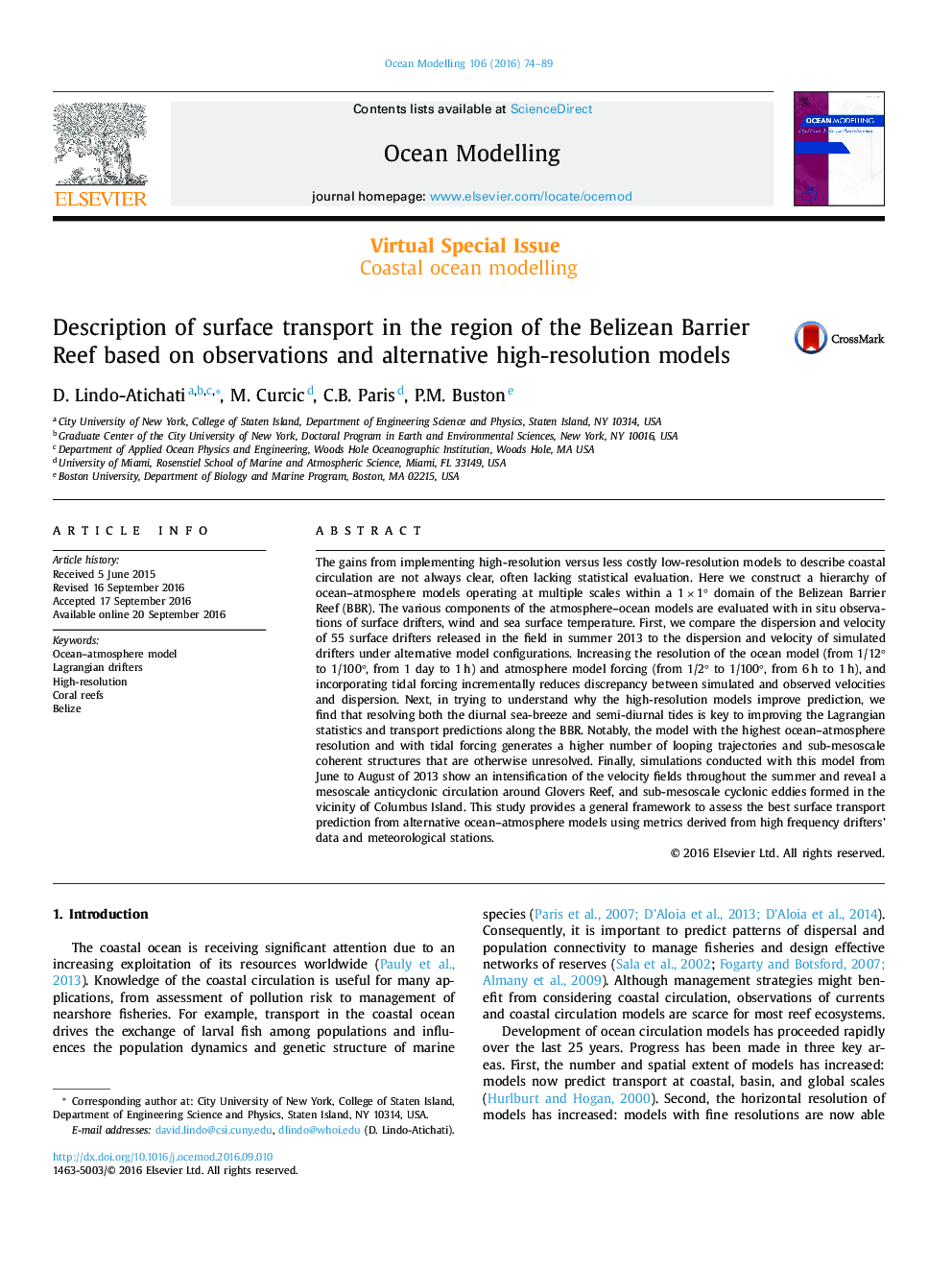| Article ID | Journal | Published Year | Pages | File Type |
|---|---|---|---|---|
| 4551951 | Ocean Modelling | 2016 | 16 Pages |
•An ocean–atmosphere model is prescribed for the Belizean Barrier Reef.•Alternative models with various resolutions are implemented.•The performance of the alternative models is assessed using observations.•The highest-resolution model with tides accurately predicts surface transport.•Resolving tidal flows and looping trajectories is important to improve predictions.
The gains from implementing high-resolution versus less costly low-resolution models to describe coastal circulation are not always clear, often lacking statistical evaluation. Here we construct a hierarchy of ocean–atmosphere models operating at multiple scales within a 1 × 1° domain of the Belizean Barrier Reef (BBR). The various components of the atmosphere–ocean models are evaluated with in situ observations of surface drifters, wind and sea surface temperature. First, we compare the dispersion and velocity of 55 surface drifters released in the field in summer 2013 to the dispersion and velocity of simulated drifters under alternative model configurations. Increasing the resolution of the ocean model (from 1/12° to 1/100°, from 1 day to 1 h) and atmosphere model forcing (from 1/2° to 1/100°, from 6 h to 1 h), and incorporating tidal forcing incrementally reduces discrepancy between simulated and observed velocities and dispersion. Next, in trying to understand why the high-resolution models improve prediction, we find that resolving both the diurnal sea-breeze and semi-diurnal tides is key to improving the Lagrangian statistics and transport predictions along the BBR. Notably, the model with the highest ocean–atmosphere resolution and with tidal forcing generates a higher number of looping trajectories and sub-mesoscale coherent structures that are otherwise unresolved. Finally, simulations conducted with this model from June to August of 2013 show an intensification of the velocity fields throughout the summer and reveal a mesoscale anticyclonic circulation around Glovers Reef, and sub-mesoscale cyclonic eddies formed in the vicinity of Columbus Island. This study provides a general framework to assess the best surface transport prediction from alternative ocean–atmosphere models using metrics derived from high frequency drifters’ data and meteorological stations.
